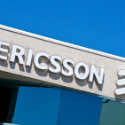
Ericsson is dramatically restructuring its operations to sharpen the focus on cloud and IT as it tries to overcome a sales slump that saw revenues drop by 2% year-on-year for the first three months of the year. (See Ericsson Reports Q1 2016.)
The Swedish vendor is facing a difficult operating environment, with customers slashing investment in the rollout of mobile broadband networks and competition from Chinese behemoth Huawei Technologies Co. Ltd. continuing to mount. (See Huawei's Carrier Division Set to Dwarf Ericsson by 2018.)
Under its latest plan, Ericsson AB (Nasdaq: ERIC)'s business will be separated into five new business units from July 1, 2016: network products; network services; cloud and IT products; cloud and IT services; and media. (See Ericsson Unveils New Corporate Structure.)
To reflect those changes and in a further effort to inject new life into its business, the vendor is also revamping its top management team, adding some new names and losing others. (See Ericsson Announces New Top Team.)
The three units addressing opportunities in cloud, IT and media will absorb Ericsson's "targeted growth areas" businesses. Ericsson's target has been to increase revenues from these businesses by 10% annually, and under the existing organizational strcuture, they accounted for 18% of the total last year.
In a presentation outlining its plans, Ericsson indicated that revenues accruing to the new cloud, IT and media units, which will include all relevant professional services and sales to enterprise customers, would have accounted for as much as 30% of total sales in 2015.
Addressing analysts earlier today, CEO Hans Vestberg said the new structure would better align Ericsson with the transformation needs of its customers and help it to reduce costs by giving business units more "end-to-end responsibility."
"We've put the structure in place for two reasons -- the market is moving and we feel our targeted growth areas are now the right size for this ... we are not satisfied with our growth and profitability and we are taking the next step to move forwards," he said.
Boosted by favorable exchange rate effects, Ericsson has reported modest growth in sales in recent years, but it has been completely outshone by the fast-growing Huawei, whose communications service provider business last year overtook Ericsson to become the world's biggest. (See Huawei: New King of the CSP Market.)
Ericsson also faces a renewed challenge from the new-look Nokia Corp. (NYSE: NOK), which completed a takeover of Alcatel-Lucent (NYSE: ALU) earlier this year, though some doubt the new Nokia's ability to increase its revenues any time soon. (See Nokia, AlcaLu Steady Ship on Costs Before Tie-Up and Eurobites: Nokia Sales to Hit $26.5B in 2016 – Analyst.)
Last year, the Swedish vendor announced a partnership with IP equipment giant Cisco Systems Inc. (Nasdaq: CSCO), aimed at better positioning it the shifting landscape and generating additional sales opportunities, but this has yet to have any notable impact on the Swedish vendor's financials. (See Cisco + Ericsson: From Soup to Nuts.)
For all the latest news from the wireless networking and services sector, check out our dedicated mobile content channel here on Light Reading.
With currency tailwinds becoming headwinds in the first quarter -- according to Chief Financial Officer Jan Frykhammar -- sales fell by 2%, to 52.2 billion Swedish kronor ($6.5 billion), compared with the same period last year, while net income rose by 45%, to SEK2.1 billion ($260 million), over the same period.
Q1 2016 | Q1 2015 | YoY change | |
Revenues | 52.2 | 53.5 | -2% |
−networks | 25.8 | 26.4 | -2% |
−services | 23.0 | 23.9 | -4% |
−support solutions | 3.4 | 3.1 | 10% |
Gross income | 17.4 | 19.0 | -8% |
Gross margin | 33.3% | 35.4% | -2.1 percentage points |
Operating income | 3.5 | 2.1 | 63% |
Operating margin | 6.7% | 4.0% | 2.7 percentage points |
−networks | 11.0% | 2.0% | 9 percentage points |
−services | 3.0% | 7.0% | -4 percentage points |
−support solutions | 7.0% | 3.0% | 4 percentage points |
Source: Ericsson. |
The bottom line was boosted by an increase in revenues from intellectual property rights as well as efficiency measures, but Ericsson's closely watched gross margin shrank to 33.3%, from 35.4% a year earlier.
Executives blamed profitability setbacks in the global services business as well as lower software sales in IP and core networks for the margin squeeze.
"Services had a tougher quarter," Vestberg told analysts and reporters. "We are coming down in volumes in network rollout and we need to address reducing our service delivery capabilities."
Accordingly, Ericsson said it would spend another SEK1 billion ($120 million) on restructuring charges this year, up from the SEK3-4 billion ($370-490 million) it had previously estimated, implying that further headcount reductions are in the pipeline.
Last year, the organization shed 17,000 of its employees but recruited another 14,000 as it worked on realigning its business needs. Ericsson noted it had a total of 115,300 employees on its books at the end of March 2016.
Despite increasing its restructuring charges, Ericsson said it was still targeting net annual savings of SEK9 billion ($1.1 billion) in 2017 compared with 2014.
Commenting on broader market trends, Vestberg said Ericsson was facing a weak macroeconomic outlook in many of its countries and that rollouts of 3G and 4G networks in emerging markets were happening at a slower pace than in previous years.
At its networks business, which accounts for about half of total revenues, Ericsson blamed lower software sales in IP and core networks for a 2% drop in sales, but far more problematic was the decline in global services.
Revenues at the existing unit dropped by 4%, to SEK23 billion ($2.8 billion), while operating income plummeted 62%, to SEK600 million ($74 million).
Executives said the company needed to work on adapting service delivery operations to align with the decline in mobile broadband project volumes that Vestberg had earlier noted.
Ericsson's share price took at hit on the Stockholm exchange Thursday morning following the revelations of its difficulties and restructuring plans, falling by as much as 10%.
The new structure is set to come into effect from a reporting perspective on January 1, 2017.
— Iain Morris, 

 , News Editor, Light Reading
, News Editor, Light Reading
About the Author(s)
You May Also Like



.jpg?width=300&auto=webp&quality=80&disable=upscale)








